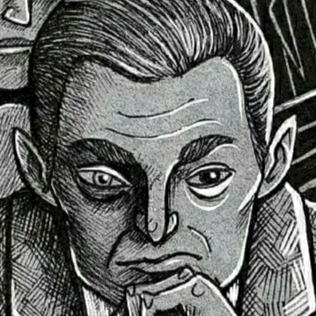- cross-posted to:
- Ukraine_UA@kbin.social
- cross-posted to:
- Ukraine_UA@kbin.social
From Leonardo da Vinci’s Salvator Mundi to Andy Warhol’s Four Marilyns, it amounts to an art collection that could grace any gallery in the world.
But rather than being the highlights of a blockbuster exhibition at a major gallery, these are just some of the 300, and counting, pieces known to have been recently owned by Russian nationals under western sanctions that have been entered into a searchable database set up by Ukraine’s National Agency on Corruption Prevention (NACP).
The agency’s “war and sanctions portal” lists paintings and sculptures thought to have been bought and sold in recent years by the Russian super-rich accused by the west and Kyiv of aiding and abetting Vladimir Putin’s war in Ukraine.
The purpose of the tool, the agency said, was to “make it easier for virtuous art market participants to carry out sanctions checks and make it difficult for Russian oligarchs to sell such assets”.
Western economic sanctions imposed on hundreds of Russian individuals are designed to restrict the ability of those who are profiting from or fuelling the war to move their fortunes around the world.
Artworks can be relatively easily sold across national borders without alerting the authorities, with the subjective nature of the value allowing prices to be easily inflated or deflated.
Link, because unbelievably this article about a website does not contain any link to the website: https://sanctions.nazk.gov.ua/en/art/
This is the best summary I could come up with:
Western economic sanctions imposed on hundreds of Russian individuals are designed to restrict the ability of those who are profiting from or fuelling the war to move their fortunes around the world.
The antiquities, art and cultural object market is said to have had a global value of $65.1bn in 2021, according to the Financial Action Task Force, an intergovernmental laundering watchdog that published a report in February to advise on regulatory best practice.
Among the collectors named on the portal is the former Chelsea football club owner Roman Abramovich, who is said to have acquired a number of well-known pieces over the years, including a Francis Bacon triptych from 1976, Alberto Giacometti’s Woman of Venice I and eight albums from the series The 10 Characters by the American conceptual artist Ilya Kabakov.
The inclusion of famous works by artists as varied as Claude Monet, Damien Hirst and Auguste Rodin highlights the extraordinary wealth accumulated by those said to be supporting the Russian leadership.
“Among their owners are Russian billionaire Viatcheslav Kantor, model Daria Zhukova, rapper Timur Yunusov (Timati) and other individuals who are under sanctions for directly supporting Russia’s war against Ukraine.”
In some cases, the art has been sold on to people who are not on a sanctions list but their past Russian ownership has been included in an attempt to discourage such assets being used to launder fortunes.
I’m a bot and I’m open source!



